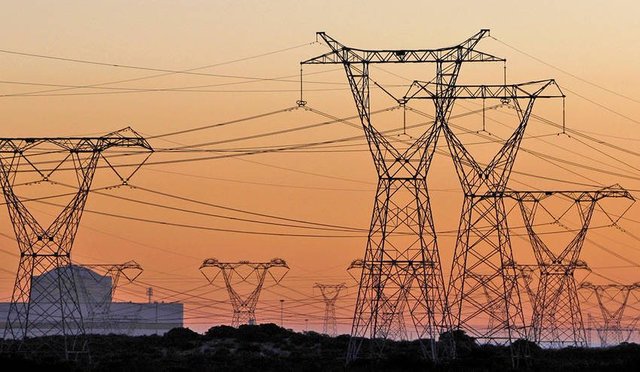

The contrasts between Nigeria and South Africa are tremendous but the similarities are still profound. On contrasts, South Africa ranks among the 30 most industrialized countries in the world, a point Nigeria would score zero; South Africa has a strategic sense of its place in Africa and in the world, a feature no longer too clear for Nigeria; the only African member of the G-20, a club from which Nigeria’s name was removed on ground of perpetual instability even before the idea matured; a party with a history and legacy in contrast to Nigeria and, finally, a citizenry with relative experience of the protest culture in contrast to a largely emotionalizing, metaphysical masses in Nigeria. On similarities, the two are regularly referred to as the powerhouses on the continent; each hold a record in level of corruption, with South Africa making additional contribution to the global vocabulary of corruption practices – Tenderpreneurs, State Capture and, finally, both are struggling with managing the economy although, again, South Africa is supposed to be moving into the developmental statist from which Nigeria weaned itself with disastrous consequences in 1986. It is against the above background that the Editorial comments of the Johannesburg based Daily Maverick is reproduced on this platform. if for nothing, then that the piece has attracted over 3000 readers by February 17th, 2019, slightly less than a week after it was published. It was originally titled “The battle for Eskom is the battle for South Africa”.
Better put, Eskom is a metaphor for South Africa. It’s a vast, unwieldy megalith entirely bankrupted by people who have treated it as a personal ATM and a political soccer field. Stage four load shedding hit us on Monday like a wet cement towel that just managed to dry. Eskom is running on a prayer, and not one addressed to a deity familiar to this publication. The world’s largest power utility should serve as a point of pride, especially in a country that has more than enough human capital to run its various operations exactly as advertised. Instead, Eskom is a state-owned zombie apocalypse: R440-billion in debt, money that is guaranteed by the sovereign, and unable to meet its rather simple mandate: keep the lights on, and the wheels of industry turning. This is a disaster that threatens to blow out the entire economy, a terrorist attack on the fabric of this county perpetrated by the very people who have sworn to govern it responsibly, and (laugh no more) competently.
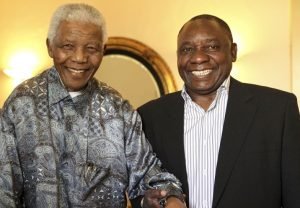
The sage and the incumbent
Former president Jacob Zuma has been busy in retirement — busier than he was during his two terms at the helm. He’s been campaigning with — and ostensibly for — President Ramaphosa in KZN, while engaging in a Twitter “charm” offensive that has the aim of portraying his presidency as unfairly maligned. But even if his critics got everything else wrong, the numbers don’t lie: when Zuma took the reins in 2009, Eskom produced 40,000MW, had 30,000 employees, and carried the debt of R40-billion. It now produces 48,000MW, has 37,000 employees, and services more than ten times the debt. It does not generate enough revenue to pay the interest, let alone salaries, maintenance, and fuel.
About that fuel. Eskom is addicted to “beautiful clean coal”, as US President Donald Trump would phrase it. Dating back to the apartheid years, supplying South Africa’s abundant, relatively cheap coal to the utility was a patronage sinecure, and lucrative in the extreme. But every party comes to an end, and the quality stuff mined proximate to coal plants is a thing of the past. There were not so subtle hints of this during the “wet coal” blackouts of 2007/2008; experts have been promising for roughly two decades that this would prove a problem.
In response, the government decided to go ahead with building Medupi and Kusile, the two largest (and most expensive) coal-fired plants in the world — names that will end up etched as epitaphs on this country’s tombstone. Terrifyingly behind schedule and under-built, they will add roughly 9GW to the network; a big contribution indeed, but still built to pump insane amounts of CO2 into the fast-warming planet’s atmosphere.
Then there is a culture of non-payment — municipalities are R17-billion in arrears to the utility — and rampant theft of electricity by people without the means to pay.
Then there are the likes of the Gupta brothers, Zuma’s infamous benefactors who managed, among other gravity-defying acts, to get a R600-million prepayment from Eskom they used to buy a coal mine called Optimum from mining giant Glencore.
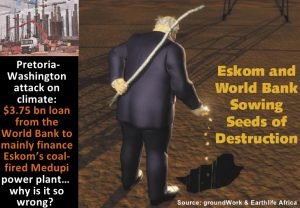
So the fact that you’re possibly reading this in darkness on a dying device really shouldn’t come as a surprise. Former Eskom Group Holdings Acting Chief Executive Matshela Koko, another of the larcenous cretins who proliferated during the Zuma years, tweeted some numbers during Monday’s blackout.
‘Stage 4 means the system is short 4,000MW. It means that @Eskom_SA is failing to meet a peak demand of 27,000MW when it has the installed capacity of 45,000MW. This means around 40% of generating capacity is not available. This is gross incompetency at the Top!!!’
Koko is right. Except that, until his recent forced exit, he was the Top. Koko and the rest of Zuma’s kleptocrats form an unbroken, centuries-long tradition of South African elites who refuse to accept blame or any accountability. The endless queues at taxi ranks, the R2-billion loss in revenue every day, the waiters serving empty restaurants, the dark school rooms — that’s all because of Koko, Brian Molefe, Ben Ngubane and their many fellow executioners.
(At least Koko’s step-daughter saw the light, a billion-rand worth of it, as her company snagged at least eight Eskom tenders. Koko is a caring man.)
President Ramaphosa said on Monday that he was “shocked” and “angry” about the state of affairs. But one does wonder about the office of the deputy presidency, which Ramaphosa occupied for four of Zuma’s nine years, and its insulation from the decline that was obviously happening around it. Ramaphosa, and indeed everyone within the governing party, should not be angry but deeply ashamed. Their saving grace on 8 May — Election Day — is that there are no viable alternatives, and no one waiting in the wings to save the country. The people who broke it will be the people tasked with fixing it, when in a perfect world they’d be huddled in the dark with the rest of us, waiting for capable and honest replacements to wipe up the gargantuan mess of their creation.
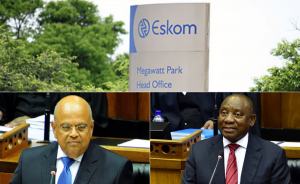
Eskom must be unbundled, says Ramaphosa
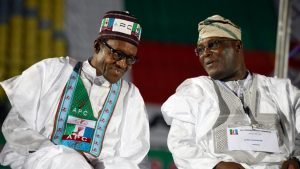
Nigeria has unbundled her NEPA and might be unbundling more soon
During his State of the Nation Address, Ramaphosa said that Eskom will soon be broken up into three distinct parts — transmission, generation and distribution. This restructuring has been government policy since 1999. Implementation, however, has never been a strong point. Unions, already smelling job cuts and privatisation, are threatening war. They will have one. And Ramaphosa will soon be presented with a horrific choice: dead workers on the street, or selling a pre-industrial backwater to his international investment partners in the UK, Germany and China at a bargain-basement price when foreign investment is desperately needed to pay down the debt incurred during the Zuma years’ free-for-all.
The lights are out for two reasons: corruption and mismanagement. For most countries, it would take a terrorist attack of unimaginable proportions to shut down the power grid. Here, the threat came from within — from the leaders elected to serve us and protect us. Their shame can only be quantified in darkness. Right now, there is plenty to go around.
Posted from my blog with SteemPress : https://intervention.ng/15039/